Other Parts Discussed in Thread: DAC5688
Dear TI,
We are currently using DAC5687-EP on one of our Software Defined Radio Design and we encountered some trouble with the DAC5687-EP.
It seems that we have spurs with a frequency equals to fs/4 at the output of the DAC. We are using the DAC in NCO mode and set the sine frequency from 36.08MHz to 56.08MHz using a constant at the data input of the DAC.
The DAC input clocks are set to 192.86MHz in dual clock mode (CLK1 generated by an FPGA and CLK2 generated by clock source). We make a sweep of the DAC output frequency from 156.78MHz (192.86 - 36.08MHz) to 136.78MHz (192.86 - 56.08MHz).
The DAC registers are set to:
VERSION: 0x03
CONFIG_0: 0x02
CONFIG_1: 0x32
CONFIG_2: 0xc0
CONFIG_3: 0x80
SYNC_CNTL: 0xe0
SER_DATA_0: 0x00
SER_DATA_1: 0x00
NCO_FREQ_0: 0x55
NCO_FREQ_1: 0x55
NCO_FREQ_2: 0x35
NCO_FREQ_3: 0x3a
NCO_PHASE_0: 0x00
NCO_PHASE_1: 0x00
DACA_OFFSET_0: 0x00
DACB_OFFSET_0: 0x00
DACA_OFFSET_1: 0x00
DACB_OFFSET_1: 0x00
QMCA_GAIN_0: 0x00
QMCB_GAIN_0: 0x00
QMC_PHASE_0: 0x00
QMC_PHASE_GAIN_1: 0x00
DACA_GAIN_0: 0x00
DACB_GAIN_0: 0x00
DACA_DACB_GAIN_1: 0xff
DAC_TEST: 0x00
At 147.081MHz (span 50Mhz): The spur is not visible

At 146.032MHz (span 50MHz): The spur is visible at 131.863Mhz
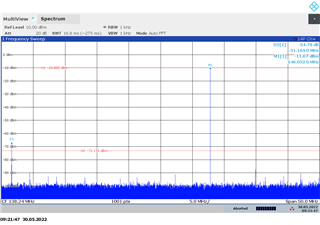
At 139.788MHz (span 50MHz): The spur and its mirror are seen (at : 133.544MHz and 146.082MHz)
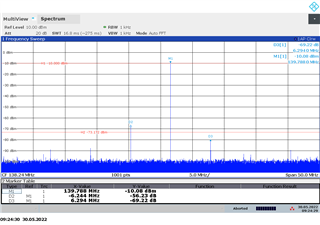
When we continue the sweep: we saw that the spur get closer to the output frequency of the DAC and then it go in the other direction when the frequency is crossed

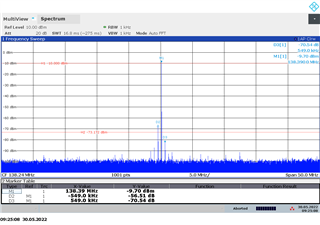

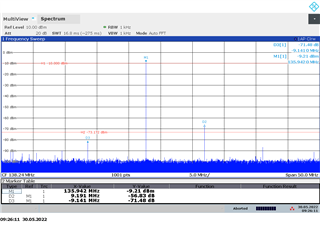
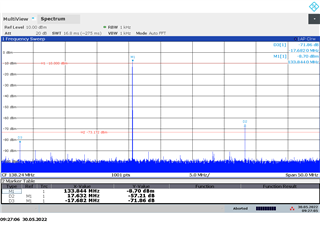
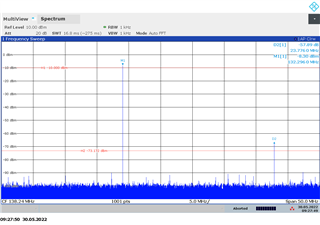
The spurs level are too high for our application ( >60dBc) and we cannot explain this behaviour of the DAC as it is out of the characteristics explain in the datasheet.
Can you explain this spurs or are we using the DAC in a bad configuration ?
Regards,
Kévin

